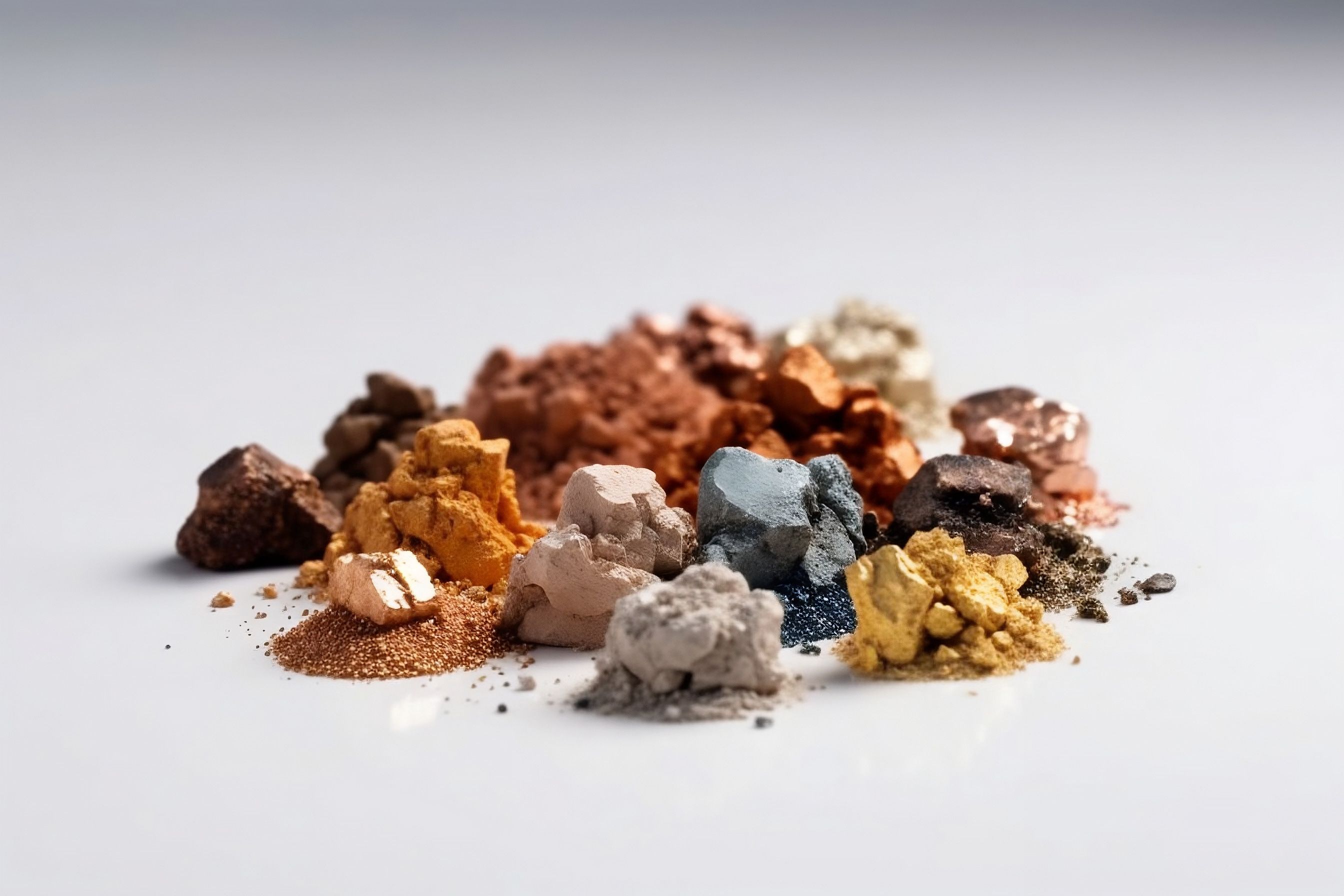Breakthrough Study Explores High-Resolution Analysis of Rare Earth Element Isotopes Using LIBS and LIBS-MLIF Techniques
New research uncovers novel findings regarding rare earth element (REE) isotopes through the utilization of high-resolution laser-induced breakdown spectroscopy (LIBS) and laser-induced breakdown spectroscopy-molecular laser-induced fluorescence (LIBS-MLIF) techniques.
A groundbreaking study conducted at Ariel University's Physical Department in Israel has brought us closer to unraveling the mysteries of rare earth elements (REEs). Led by M. Gaft, the research team employed high-resolution laser-induced breakdown spectroscopy (LIBS) and LIBS-MLIF techniques to explore the molecular emissions of REEs in laser-induced plasma (LIP) and evaluate their potential for isotopic shift analysis. The results of their study have been published in the esteemed journal Spectrochimica Acta Part B: Atomic Spectroscopy (1).
Piles of mined and refined rare earth elements. Generative AI. Generative, AI | Image Credit: © Southern Creative - stock.adobe.com

The study focused on determining the most suitable molecule for natural isotope analysis by considering both molecular weight and emission spectra. After meticulous investigation, it was discovered that GdO (gadolinium oxide) exhibits remarkable characteristics that make it an excellent choice for initiating isotopic shift determination in LIP. The isotopic shifts observed were found to depend on specific vibrational transitions, ranging from tenths to several cm−1. Interestingly, for artificially induced isotopes, the lighter REEs such as Sc (scandium) and Y (yttrium) demonstrated potential as optimal candidates.
One of the key advancements highlighted in the study is the superiority of LIBS-MLIF over traditional LIBS. The technique of LIBS-MLIF offers significantly higher spectral resolution for vibrational transitions. This improved resolution facilitates better detection of vibrational transitions with elevated Δυ, a parameter that proves advantageous for isotopic shift analysis. Moreover, the rotational transitions also exhibited substantially higher spectral resolution, enabling more precise observations.
The findings of this study open up new avenues for researchers and scientists to delve deeper into the isotopic composition of rare earth elements. Understanding isotopic shifts in REEs holds immense potential for a wide range of applications, including environmental monitoring, geological studies, and even forensic investigations. By harnessing the power of high-resolution spectroscopy techniques like LIBS-MLIF, researchers can now explore and analyze the intricate molecular emissions of REEs in laser-induced plasma, offering a more comprehensive understanding of their isotopic behavior.
The research team at Ariel University's Physical Department have provided a valuable resource for future investigations into rare earth elements. As the world becomes increasingly reliant on rare earth elements for various technological advancements, this study paves the way for improved methodologies in analyzing and understanding these crucial elements. With this research, we move closer to unlocking the secrets hidden within the atomic world of rare earth elements, offering promising prospects for future discoveries and applications.
Reference
(1) Gaft, M.; Nagli, L.; Gorychev, A.; Raichlin, Y.High-resolution LIBS and LIBS-MLIF of REE molecular emission in laser-induced plasma. Spectrochimica Acta Part B: At. Spectrosc. 2023, 204, 106667. DOI: 10.1016/j.sab.2023.106667
Laser Ablation Molecular Isotopic Spectrometry: A New Dimension of LIBS
July 5th 2012Part of a new podcast series presented in collaboration with the Federation of Analytical Chemistry and Spectroscopy Societies (FACSS), in connection with SciX 2012 — the Great Scientific Exchange, the North American conference (39th Annual) of FACSS.